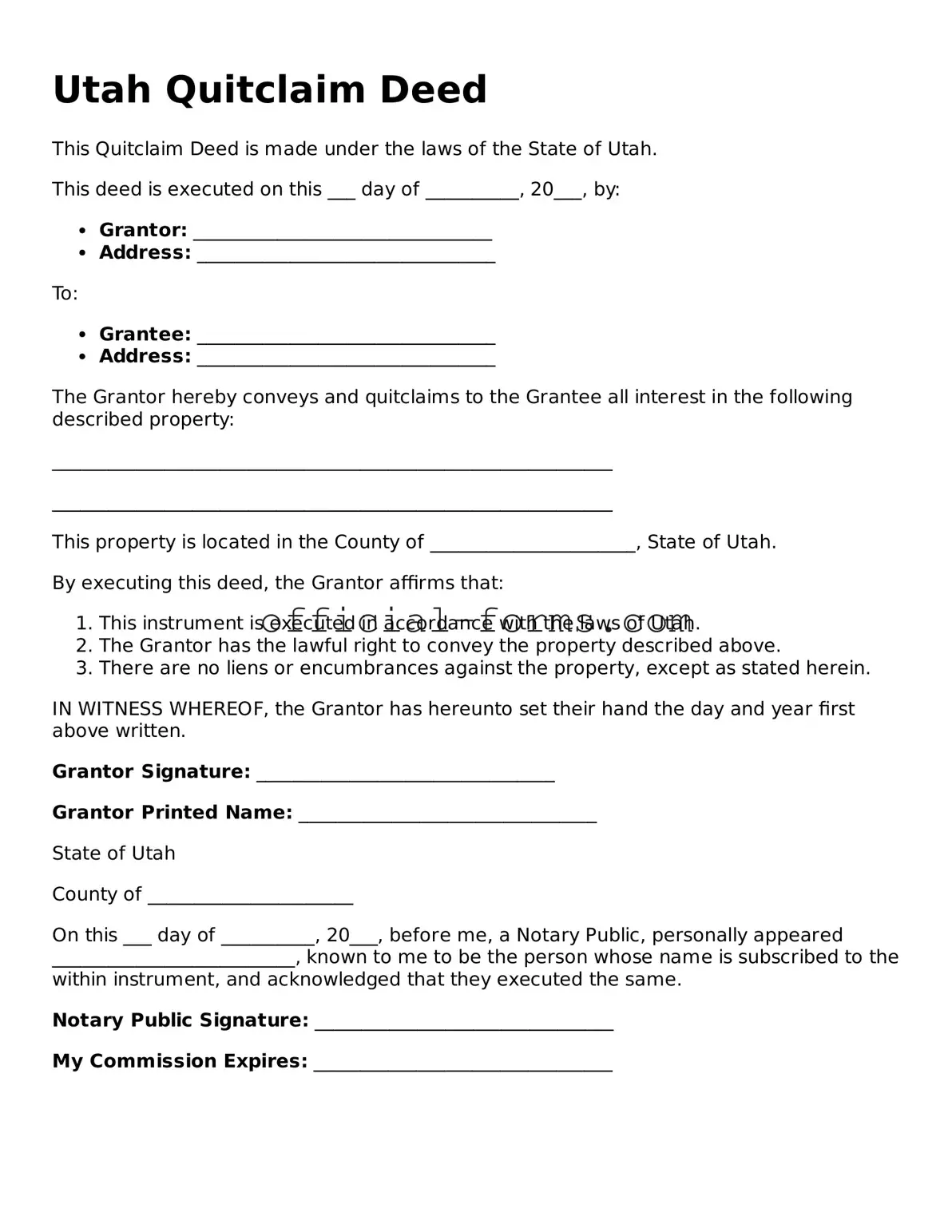When individuals fill out the Utah Quitclaim Deed form, several common mistakes can occur, potentially leading to complications in the transfer of property. One frequent error is failing to accurately identify the grantor and grantee. The names must be spelled correctly and should match the names on the property title. Any discrepancies can result in delays or disputes regarding ownership.
Another mistake involves neglecting to provide a complete legal description of the property. A vague description can create confusion and may not fulfill legal requirements. It is essential to include the precise details as recorded in the county assessor's office to ensure clarity and validity in the deed.
People often overlook the necessity of notarization. A Quitclaim Deed must be signed in the presence of a notary public to be legally binding. Failing to have the document notarized can render it invalid, undermining the entire purpose of the deed.
In addition, some individuals forget to include the date of the transaction. This date is crucial as it establishes when the transfer of ownership takes effect. Omitting this detail can lead to confusion regarding the timeline of the property transfer.
Another common error is not checking for any outstanding liens or encumbrances on the property. If these issues are not addressed prior to the transfer, the new owner may inherit financial burdens that were not disclosed during the transaction.
People sometimes use the wrong form altogether. The Utah Quitclaim Deed is specific to certain situations, and using an incorrect form can complicate the transfer process. It is vital to ensure that the correct form is utilized for the intended purpose.
Additionally, failing to record the deed with the county recorder’s office is a significant oversight. Recording the deed is necessary to provide public notice of the property transfer. Without this step, the new ownership may not be recognized legally, which can lead to disputes in the future.
Some individuals may also neglect to include any necessary attachments or exhibits that provide additional information about the property. These documents can be critical in clarifying terms of the transfer or providing further context about the property being conveyed.
Another mistake is not consulting with a professional when unsure about the process. While it is possible to complete a Quitclaim Deed independently, seeking legal advice can prevent errors that might lead to legal complications later on.
Finally, individuals sometimes fail to keep copies of the completed deed for their records. Retaining a copy is important for future reference and can serve as proof of ownership. Without documentation, establishing ownership may become difficult if disputes arise.
